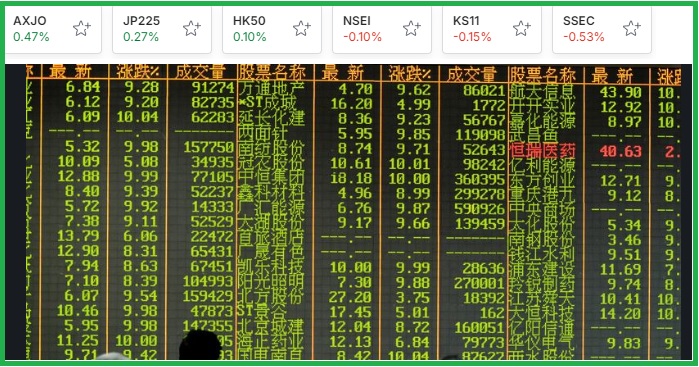
(Photo : Asian markets)
Indian stock markets surged to record highs in early trade on Thursday, boosted by a 50-basis point rate cut by the US Federal Reserve, which fueled positive sentiment across major Asian markets.
The NSE Nifty 50 climbed 171.85 points, or 0.68%, to a historic high of 25,587.10, while the BSE Sensex reached an all-time high of 83,742.82 points, rising by over 770 points, or 0.92%, by 9:45 am.
All sectors were in the green, with rate-sensitive technology shares leading the rally. Top gainers on the Nifty included NTPC, which jumped 2.64%, followed by LTIMindtree (1.67%), Wipro (1.83%), Tech Mahindra (1.17%), and Infosys (1.13%). ONGC and BPCL were the only major laggards, slipping by 0.98% and 0.45%, respectively.
Market breadth was positive, with 1,612 shares advancing out of 2,265, while 591 declined and 62 remained unchanged.
Asian markets also saw strong gains. Japan's Nikkei surged 2.45% to 37,271.23, buoyed by a softening yen, which retreated from a nine-month high against the US dollar following the Fed's decision. Hong Kong's Hang Seng Index rallied by 318.81 points, or 1.81%, to 17,978.83, while South Korea's KOSPI Composite remained relatively flat at 2,574.06 points.
Overnight, US markets experienced volatility after the Federal Open Market Committee (FOMC) meeting. The S&P 500 and Dow Jones initially surged on the rate cut, hitting record highs. However, gains were pared as investors digested Fed Chair Jerome Powell's comments indicating no plans for deeper rate cuts to levels seen during the COVID-19 pandemic, though he signalled the easing cycle would continue. Concerns over slowing economic growth also tempered early optimism.
The Dow Jones Industrial Average dropped 103.08 points, or 0.25%, to 41,503.10. The S&P 500 slipped 16.32 points, or 0.29%, to 5,618.26, and the Nasdaq Composite fell 54.76 points, or 0.31%, to 17,573.30.
US stock futures, however, rebounded in line with gains seen across Asian markets. The Fed's decision to cut rates by 50 basis points to the 4.75%-5.0% range - its first cut since March 2020 - was welcomed by markets but also raised concerns about the broader economic outlook.
This marks a shift from the central bank's tightening stance, which began after the pandemic, with the last rate hike occurring in July 2023 as inflation concerns persisted.









